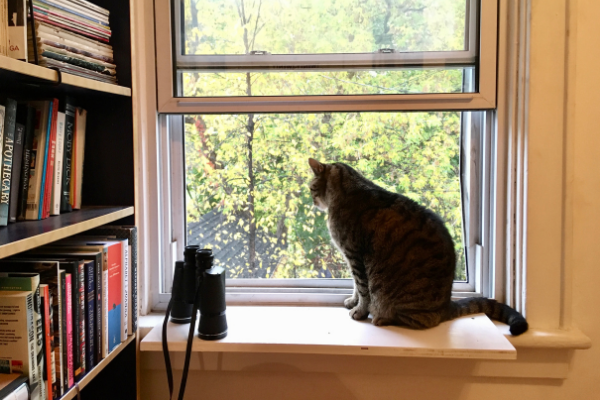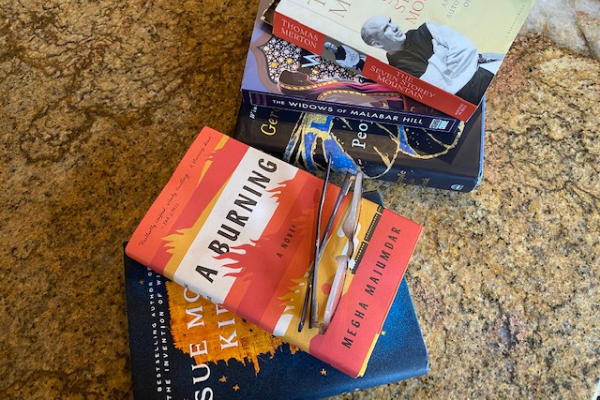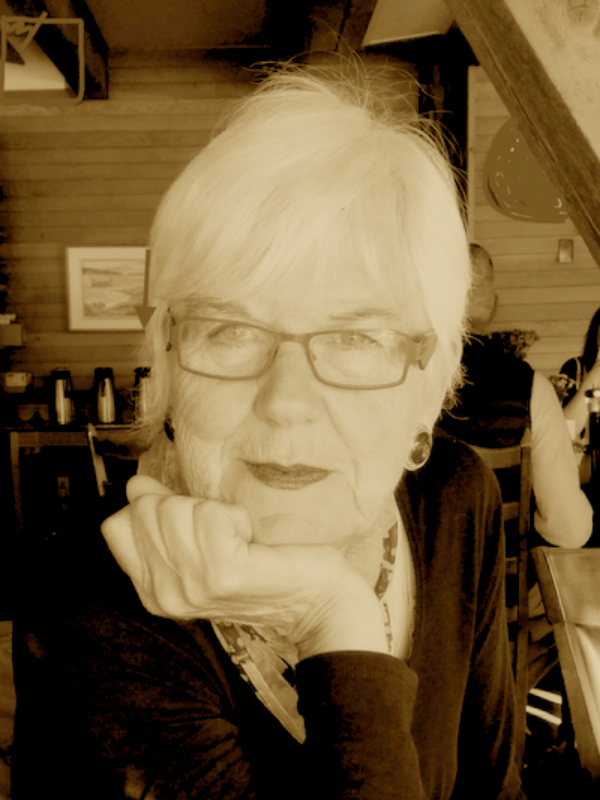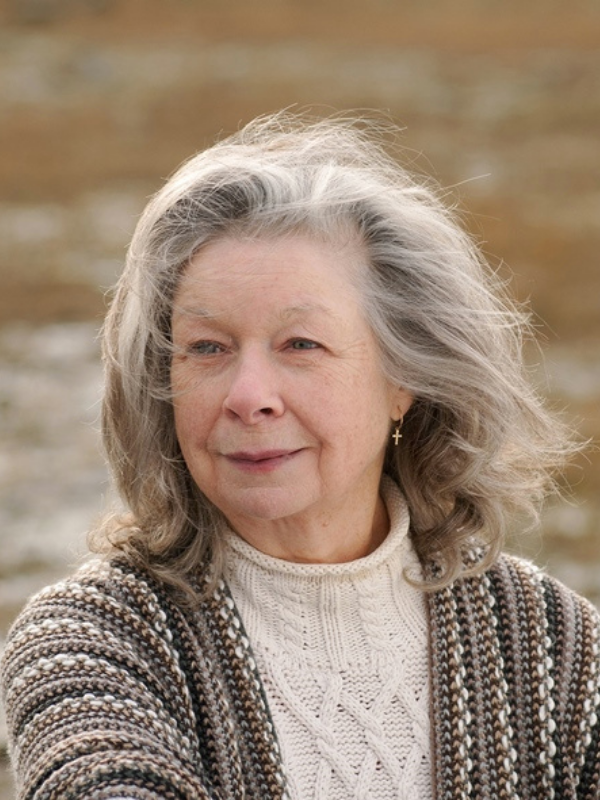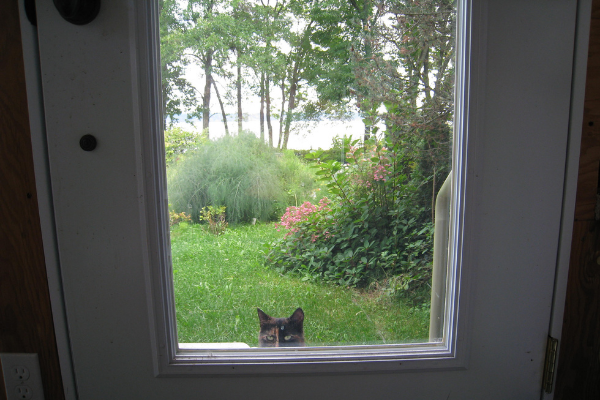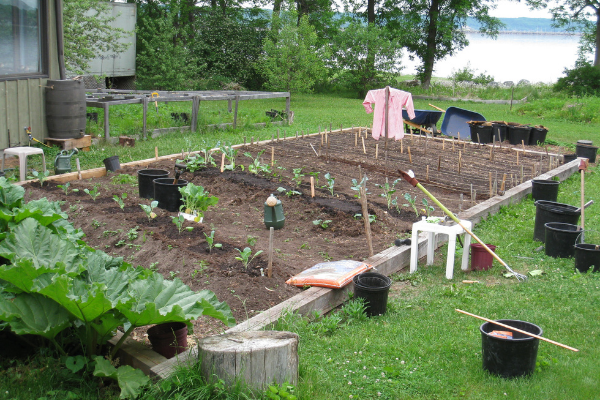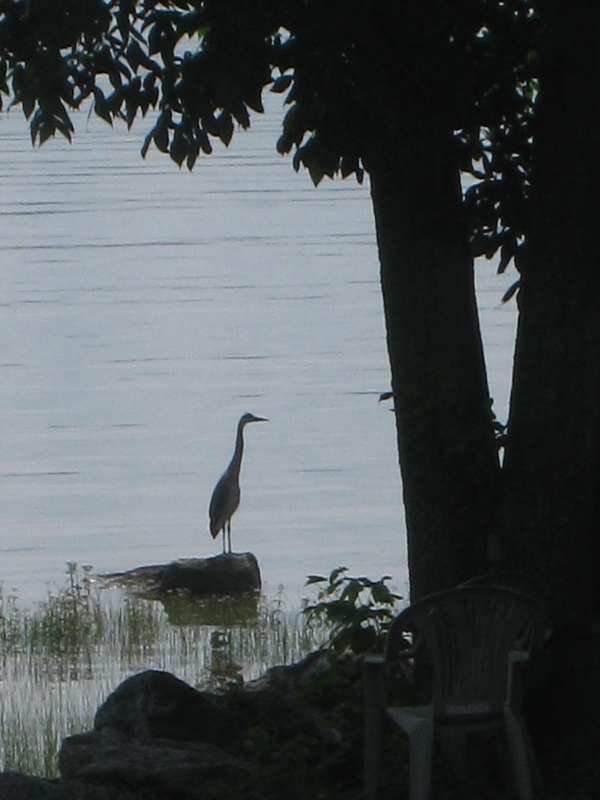Barb: I am confident somehow you will feed daylilies, but not for a very long time, I hope. What I find so refreshing in these poems about death of loved ones is not only their form – your breaking of rules to augment your craft, but also their voice. In “Lazarus Saturday”, the speaker’s tone carries for me a delightful irreverence for the echoed situation in “The Body’s Dues”. How is the bearing witness different in this poem? Why did you feel compelled to return to this situation a second time in verse?
Mia: You’re going to laugh: when I first read your “but not for a very long time” there, I thought, “Oh! She must believe in the resurrection of the body!!” A little while in the grave, then, whoosh! gone. Now, I can see what you meant instead. But my mistake is a good jumping-off point. In “Lazarus Saturday”, you can see that I gnaw around the ambiguity of our human-inhuman-inhumed situation.
Tissued together, rising’s sink or swim
for both of them or neither, thick or thin.
I don’t say I know this. Nor understand it. All I can do is gesture towards it, with my life. And my words. You ask why I revisited my husband’s death. Well, I’ll likely continue to; it’s not a choice; it just happens. I know, for instance, there’s another one simmering to be written, called “Scotch Tape” (don’t ask). But in the case of “Lazarus Saturday”, it was quite simply kicked off by a visit to a friend in Montreal just before Easter that same year and going with her to the Cathedral, where the Gospel was the Lazarus story. Lazarus was already in the first poem, as you saw. Funny, my friend turned to me after and wondered if going to that service, two Sundays before Easter, had been a good idea or not, under the circumstances. I thought yes, but didn’t know then how. But the image had come to me during the service, of that kid hopping in a sack, something of the absurdity of the moment we take so seriously in the Lazarus story. Lazarus is one of my heroes; jumping in a gunny sack in no way demeans him for me, nor renders the story any less earthquaking.
But it was interesting to find that having a first go at it in the first sonnet didn’t exhaust what the moment had meant for me. St Francis’s brother Ass. Body talk. Bawdy talk. So: another go. Begin the same. Diverge. Second sonnet – the one that ends up exploring “tissued together”, after acknowledging the particular historical situation Lazarus had been in. And then – I don’t remember this, but I guess – that led easily to the third sonnet: begin the same, diverge, then the Lazarus reference comes full circle to the terrain of “The Body’s Dues”. But I’m saying this after the fact; I don’t claim to have planned the thing; creation is a bit of a hidden mystery, like roots growing underground. One just tries to do it justice. RBG’s tzedek.
Barb: Mia, I had no idea where this interview would take us when we began. The fact that RBG entered often into our conversation is somehow apt and timely given the subject matter and our mutual admiration. I will end my questions with one on the final poem in the sequence, “Bones”, another sonnet, this one Shakespearean. As I read it, I assume it is in the voice of the rector mentioned. “Because the bones were found on church terrain /the job fell to the rector, to oversee /a protocol .…” The voice seems to be setting up a contrast among the various characters: students, profs, rector, maybe even the city crews. All have come together in an unlikely shared purpose: to care for the bones. “Backhoes, city crews, brown paper bags later /the job became the students’ and the profs’ – /and mine: asperges, words and signature.…” Together they have “a sense of decorum, shared respect, some laughs.” The students I assumed were the ones who saved for “me” (the rector) “the opening of the first bag”, a privilege in their archaeological world. I suppose what I am really asking is how am I to interpret the last five lines of the poem? What is the speaker saying about the “twenty-odd year olds in that lab awed there,” and their faith and their feeling of responsibility for the bones?
Mia: Do we have an hour? First, yes, I was the “rector”, I was the “I”. And by “protocol” I mean it both literally – that is what the Department or in fact the University calls such relationships with an outside partner, in this case the rector of the Anglican parish church in question and by implication the diocese – and, if you like, figuratively, a jeu de mots about how we are to be, and behave, together in this world. Each with his responsibility. En passant, it was a church in Old Quebec which had ceased to function as a church, and whose congregation had moved to my parish – this was years before I arrived – thus that old parish was in my care. It’d have been fun for the poem if the bones had been much older – as so many of the bones such a Dept. would normally study would be – i.e. the contrast between us and them that much greater; but in this case we know the origin: the Protestants (Anglican, Presbyterian, i.e. non-Catholic) in Catholic New France after the British conquest of the Plains of Abraham. I may be telling you more about grasshoppers than you want to know, but it’s fascinating, really. I believe I’ve heard that the nuns of the monastère des augustines even sent British soldiers they had nursed but been unable to save to this gravesite, out of delicacy, honouring them by giving them their faith kin to lie among. (No wonder what the Augustines founded was called Hôtel-Dieu. Another en passant, have you ever read the American writer Victoria Sweet’s book called God’s Hotel? A lovely read.) The gravesite had functioned as such long before it even had a church building, which later became a parish church.
Anyway, you can imagine that the city – which bought it from the diocese – would be involved in the historical dig, done not for archeological reasons but to buttress the foundering old church walls! Talk about necessity and invention. Those dear bones, which gave many a graduate student a dissertation subject, were treated with respect from the first crew on. For me, the contrast of age is only between the young students and the old bones. The other contrasts are more in the nature of church and state contrast, sacred and secular contrast, cleric and laïc, faith and science – the celebrant and the academic. But I rush to say: I think for none of us involved did that really present a contrast, more just a vibration, or a harmonic. Yet again en passant, my husband was a member of something called The Society of Ordained Scientists. You hear and see so much debate about the supposed conflict between faith and science. We never did see the conflict. Neither did Einstein, for that matter. Nor, say, Teilhard de Chardin.
I mention him because my invited role was in some way to ‘sanctify’ their work, given the human remains. And their workspace. At their request. Hence the asperges, hence the words of prayer (and yes, I had to sign something, for officialdom). And hence the ritual I gave them of reading a plaque on the lab wall at, say, the beginning of each week, something like that, when they turned up to work. It was from “Hymn to Matter” which Teilhard de Chardin, a paleontologist, had written. Mygawd, you could say everything I’ve been talking to you about in this interview is about my own attempted hymn to matter! Anyway, that was my contribution to their lovely request of me, re their lab: I chose Teilhard for them to tangle with. And perhaps my involvement stirred up the inscape that makes it into the final couplet.
Oh, and by the way, it was the profs who gave me the honour of opening the first paper bag. (I love the exaltation of brown paper implied!) It was theirs to give. And I believe a ritual sincerely desired by them i.e. that they be at peace with the bones, via the bones’ Church. But I would say – you see? I’m getting to your questions, hah! – that the most awe-inspiring moment in the whole poem is that student at the end, whose words I cite almost verbatim. Come to think of it, I had them put her exact words on the wall of their lab, too, under the Teilhard quote. I find such dignity, such presence, in her statement. Yes, they were not, I think, members of any Church. That didn’t matter. “[W]hat faith they had”, as the poem says, was the taking on of the responsibility of respect, and of protection, and of knowing – a knowing they were going to have after days and years of looking. What more can we do in life?
So to answer your questions point blank: it is the poet who is awed by the sequence we all (crew, city officials, profs, students, cleric) underwent that could lead to that still small voice of the student beside her microscope.
But I trust the poem stands on its own, and I hope I haven’t ruined it for people by talking so much around it with things they didn’t need to know, but might find interesting. After all, I still love what can be packed into 14 lines! Or rather what is between the lines, which is where poetry happens. Here’s to ellipsis.



